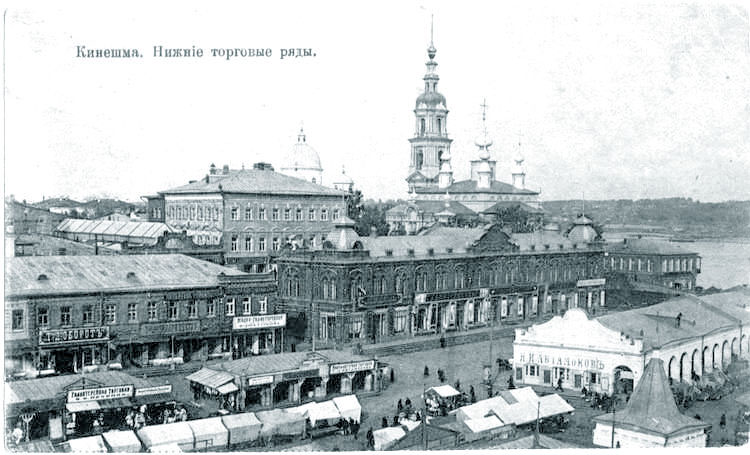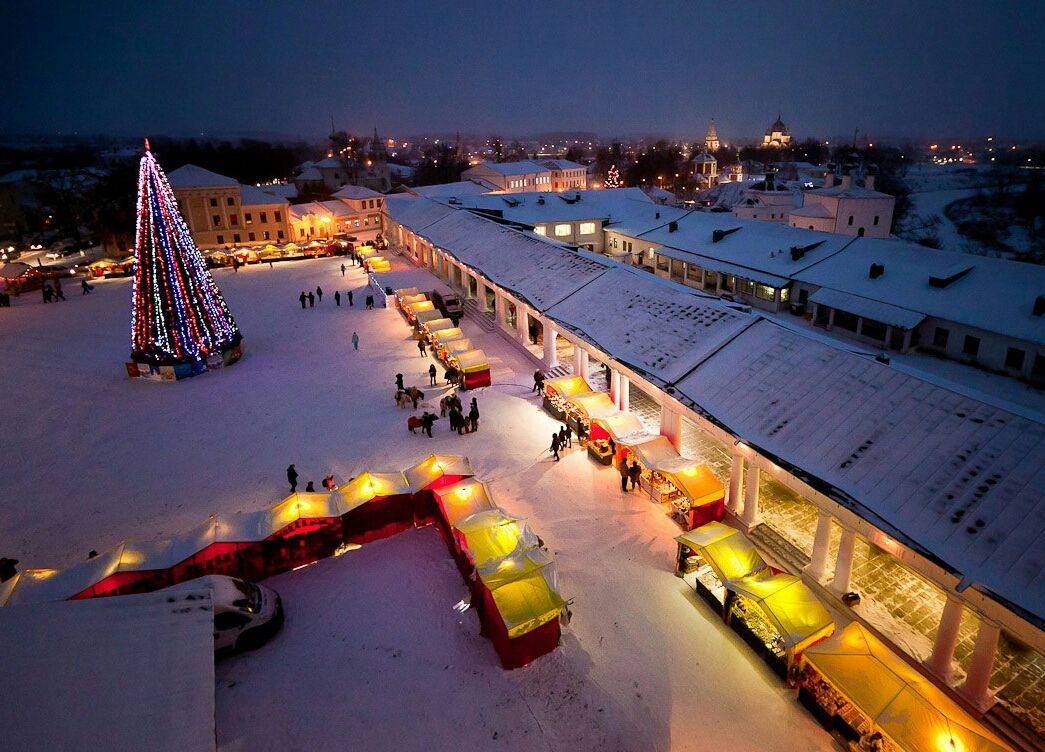|
Macarius Of Unzha
Macarius of the Yellow Water Lake and Unzha River, the Unzha, the Miracle Worker (; 1349–1444) was a Russian Orthodox Church, Russian Orthodox monk and saint. He is credited with the founding of four monasteries in the Middle and Upper Volga regions of Russia. Life The story of Macarius is based on ''Chet’yi-Minei'' (the standard Hagiography#Hagiography in Eastern Orthodoxy, Russian Orthodox ''Lives of the Saints'') as well as to other old manuscripts. One of them, kept in , was first inventoried in 1835. The other is kept in Makaryev Monastery, Makaryev Zheltovodsky Convent, and is written in the 17th century paleography, hand. Church scholars believe that he was most likely born in 1349. His home town, Nizhny Novgorod, was the capital of the Principality of Nizhny Novgorod-Suzdal, ruled by Prince Konstantine Vasilyevich. As most other Russian principalities of the time, his land was dominated by the Golden Horde overlords. Macarius was baptised in his parents' parish chur ... [...More Info...] [...Related Items...] OR: [Wikipedia] [Google] [Baidu] |
Venerable
''The Venerable'' often shortened to Venerable is a style, title, or epithet used in some Christianity, Christian churches. The title is often accorded to holy persons for their spiritual perfection and wisdom. Catholic In the Catholic Church, after a deceased Catholic has been declared a servant of God by a Bishop (Catholic Church), bishop and proposed for beatification by the pope, such a servant of God may next be declared venerable ("heroic virtue, heroic in virtue") during the investigation and process leading to possible canonization as a saint. A declaration that a person is venerable is not a pronouncement of their presence in Heaven. The pronouncement means it is considered likely that they are in heaven, but it is possible the person could still be in purgatory. Before one is considered venerable, one must be declared by a proclamation, approved by the pope, to have lived a life that was "heroic in virtue" (the theological virtues of faith, hope, and charity and the ... [...More Info...] [...Related Items...] OR: [Wikipedia] [Google] [Baidu] |
Golden Horde
The Golden Horde, self-designated as ''Ulug Ulus'' ( in Turkic) was originally a Mongols, Mongol and later Turkicized khanate established in the 13th century and originating as the northwestern sector of the Mongol Empire. With the division of the Mongol Empire after 1259, it became a functionally separate khanate. It is also known as the Kipchak Khanate or the Ulus of Jochi, and replaced the earlier, less organized Cuman–Kipchak confederation. After the death of Batu Khan (the founder of the Blue Horde) in 1255, his dynasty flourished for a full century, until 1359, though the intrigues of Nogai Khan, Nogai instigated a partial civil war in the late 1290s. The Horde's military power peaked during the reign of Özbeg Khan (1312–1341), who adopted Islam. The territory of the Golden Horde at its peak extended from Siberia and Central Asia to parts of Eastern Europe from the Ural Mountains, Urals to the Danube in the west, and from the Black Sea to the Caspian Sea in the south ... [...More Info...] [...Related Items...] OR: [Wikipedia] [Google] [Baidu] |
Kineshma
Kineshma (), the second-largest town in Ivanovo Oblast in Russia, sprawls for along the Volga River, 335 kilometers north-east of Moscow. Population: Etymology From a substrate Finno-Ugric language (cf. ('kine', < Proto-Finno-Permic ''*känз''), "hemp"). History Kineshma was first noticed as a '' posad'' in 1429. In 1504, Ivan III gave it to Prince Feodor Belsky, who escaped to from and married Ivan's niece. Later on ...[...More Info...] [...Related Items...] OR: [Wikipedia] [Google] [Baidu] |
Reshma
Reshma (; c. 1947 – 3 November 2013), was a Pakistani folk singer. Awarded with Sitara-i-Imtiaz (Star of Distinction), the third highest honour and civilian award in Pakistan among other honours, she is remembered for folk songs and her powerful singing voice. Born in Rajasthan, India in a nomadic Banjara household in 1947, her family relocated to Karachi after the Partition of India. Discovered by a local producer at the age of twelve while singing at the shrine of Lal Shahbaz Qalandar in Sehwan, Sindh, Reshma went on to record various folk songs for such labels as the Pakistan Radio. Her first project with the company " Laal Meri" was an instant hit and she was catapulted to fame with several television appearances in the 1960s. Reshma went on to record songs for both the Pakistani and Indian film industry. Some of her most memorable songs include "Laal Meri", "Hai O Rabba Nahion Lagda Dil Mera", "Ankhiyan Nu Rehen De" and "Lambi Judai" among others. She died on 3 N ... [...More Info...] [...Related Items...] OR: [Wikipedia] [Google] [Baidu] |
Epiphany (Christian)
Epiphany ( ), also known as "Theophany" in Eastern Christian tradition, is a Christian feast day commemorating the Biblical Magi, visit of the Magi, the baptism of Jesus, and the wedding at Cana. In Western Christianity, the feast commemorates principally (but not solely) the Biblical Magi, visit of the Magi to the Christ Child, and thus Jesus Christ's physical manifestation to the Gentiles. It is sometimes called Three Kings' Day, and in some traditions celebrated as Little Christmas. Moreover, the feast of the Epiphany, in some Christian denominations, denominations, also initiates the liturgical season of Epiphanytide. Eastern Christians, on the other hand, commemorate the baptism of Jesus in the River Jordan, seen as his manifestation to the world as the Son of God (Christianity), Son of God, and celebrate it as the Feast of the Epiphany or of the Theophany. The traditional site of the ministry of John the Baptist is in Al-Maghtas in Jordan, with the baptism of Jesus once m ... [...More Info...] [...Related Items...] OR: [Wikipedia] [Google] [Baidu] |
Lukh River
The Lukh () is a river in Ivanovo Oblast, Ivanovo, Nizhny Novgorod Oblast, Nizhny Novgorod and Vladimir Oblasts in Russia, a left tributary of the Klyazma (Volga's basin). Great Soviet Encyclopedia The length of the river is 240 km. The area of its drainage basin is 4,450 km2.«Река Лух» Russian State Water Registry The Lukh freezes up in late November and breaks up in April. [...More Info...] [...Related Items...] OR: [Wikipedia] [Google] [Baidu] |
Suzdal
Suzdal (, ) is a Types of inhabited localities in Russia, town that serves as the administrative center of Suzdalsky District in Vladimir Oblast, Russia, which is located along the Kamenka tributary of the Nerl (Klyazma), Nerl River, north of the city of Vladimir, Russia, Vladimir. As of the Russian Census (2021), 2021 Census, its population was 9,286. In the 12th century, Suzdal became the capital of the principality. Currently, Suzdal is the smallest of the Russian Golden Ring of Russia, Golden Ring towns. It has several sites listed as World Heritage Site, UNESCO World Heritage Sites. History The town's history dates back to 999 and 1024. In 1125 Yuri Dolgorukiy, Yury Dolgoruky made Suzdal the capital of the Vladimir-Suzdal#Rostov-Suzdal, Rostov-Suzdal principality. In 1157, Andrey Bogolyubsky, Andrei Bogolyubsky moved the capital from Suzdal to Vladimir, from which time the principality was known as Vladimir-Suzdal. Suzdal was burned and plundered in 1237 during the Mo ... [...More Info...] [...Related Items...] OR: [Wikipedia] [Google] [Baidu] |
Monk
A monk (; from , ''monachos'', "single, solitary" via Latin ) is a man who is a member of a religious order and lives in a monastery. A monk usually lives his life in prayer and contemplation. The concept is ancient and can be seen in many religions and in philosophy across numerous cultures. The Greek word for "monk" may be applied to men or women. In English, however, "monk" is applied mainly to men, while ''nun'' is typically used for female monastics. Although the term ''monachos'' is of Christianity, Christian origin, in the English language ''monk'' tends to be used loosely also for both male and female ascetics from other religious or philosophical backgrounds. However, being generic, it is not interchangeable with terms that denote particular kinds of monk, such as cenobite, hermit, anchorite, or Hesychasm, hesychast. Traditions of Christian monasticism exist in major Christian denominations, with religious orders being present in Catholicism, Lutheranism, Oriental Ort ... [...More Info...] [...Related Items...] OR: [Wikipedia] [Google] [Baidu] |
Kiev Pechersk Lavra
The Kyiv Pechersk Lavra or Kyievo-Pecherska Lavra (), also known as the Kyiv Monastery of the Caves, is a historic lavra or large monastery of Eastern Christianity that gave its name to the Pecherskyi District where it is located in Kyiv. Since its foundation as the cave monastery in 1051, the Lavra has been a preeminent center of Eastern Christianity in Eastern Europe. Etymology and other names means ''cave'', which in turn derived from Proto-Slavic ''*реktera'' with the same meaning. is used to describe high-ranking male monasteries for monks of the Eastern Orthodox Church. Therefore, the name of the monastery is also translated as Kyiv Cave Monastery, Kyiv Caves Monastery or the Kyiv Monastery of the Caves (from '). History Foundation and early history The ''Primary Chronicle'' contains contradictory information as to when the monastery was founded: in 1051, or in 1074. Anthony, a Christian monk from Esphigmenon monastery on Mount Athos, originally from Liubec ... [...More Info...] [...Related Items...] OR: [Wikipedia] [Google] [Baidu] |
Dionysius, Metropolitan Of Kiev
Saint Dionysius I (, ''Dionisii''); secular name: David (1300? – 15 October 1385), was a Russian Orthodox metropolitan in 1384–1385. A native of the Duchy of Kiev as a young man David entered the Kyiv Caves Lavra, where he was tonsured a hieromonk and given the religious name Dionysius. He is known to have spent a number of years living in a cave that he dug out himself on the banks of the Volga River not far from Nizhny Novgorod. Later, Dionysius founded the Pechersky Monastery on that same spot, which was dedicated in honour of the Ascension of the Lord. In 1374, he was consecrated the Bishop of Suzdal and won love and respect on the part of the locals. In 1378, Dionysius was recommended as Metropolitan of Kyiv by St. Sergius of Radonezh after the death of Metropolitan Alexius. However, Grand Prince Dmitri Donskoi had his own candidate – a priest by the name of Mikhail (Mityaya). Dionysius was one of a number of bishops at the council who opposed Mikhail, who was suspe ... [...More Info...] [...Related Items...] OR: [Wikipedia] [Google] [Baidu] |
Lavra
A lavra or laura (; Cyrillic: Ла́вра) is a type of monastery consisting of a cluster of cells or caves for hermits, with a church and sometimes a refectory at the center. Lavra monasteries operate within the Orthodox and other Eastern Christian traditions; the name is also used by some Catholic communities. The term in Greek initially meant a narrow lane or an alley in a city.. In a later Eastern Orthodox context, the term took the new meaning of large and important monastery. History Byzantine laura/lavra From the fifth century the Greek term ''laura'' could refer specifically to the semi-eremitical monastic settlements of the Judaean Desert, where lauras were very numerous. The first lauras of Palestine were founded by Chariton the Confessor (born 3rd century, died c. 350): the Laura of Pharan (now Wadi Qelt) northeast of Jerusalem, the Laura of Douka on the Mount of Temptation west of Jericho, and Souka Laura or Old Laura in the area of Tuqu' in Wadi Khureitun. Sa ... [...More Info...] [...Related Items...] OR: [Wikipedia] [Google] [Baidu] |





